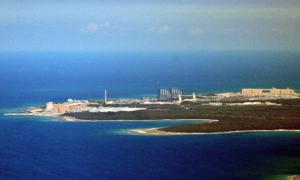

Ontario Town Votes to Become a Willing Host for a Nuclear Waste Repository
A northwestern Ontario town has formally decided it is willing to become the site of a deep geological repository for Canada’s nuclear waste.
The Nuclear Waste Management Organization plans to select a site this year where millions of bundles of used nuclear fuel will be placed in a network of underground rooms connected by cavernous tunnels.

The process for the $26-billion project had already been narrowed down to two sites, Ignace in northern Ontario and another in southern Ontario, and the NWMO says that both the local municipality and the First Nation in those areas will have to agree to be willing hosts.
Ignace, between Thunder Bay and Kenora, is now the first of those four communities to make its decision known, and town council voted in favour of it at a special meeting on July 10.

One of the many natural waterfalls found in Ignace, Ontario.
A committee of community members tasked with taking the pulse of the town’s willingness presented the results of a community vote and said that out of the 640 residents who voted, 495 or 77 percent voted in favor.
Neither of the First Nations has yet made their willingness decisions, and the municipality of South Bruce is set to hold a referendum in October.


The current fleet of nuclear reactors in Canada will produce about 5.5 million used fuel bundles, with around 3.2 million already in either wet or dry storage on site at nuclear plants.
But the NWMO says the current containers of thick concrete walls lined on the outside with a steel plate are designed to last 50 years, so they are not a long-term solution.
The organization, funded by the corporations that generate nuclear power and waste, such as Ontario Power Generation and Hydro-Quebec, is instead planning to build a deep geological repository, as far underground as the CN Tower is tall.
The used nuclear fuel pellets, baked into ceramic, are contained in fuel rods made of corrosion-resistant Zircaloy. Those rods will be in containers made of carbon steel and coated with copper, and those containers will be packed into bentonite clay.
